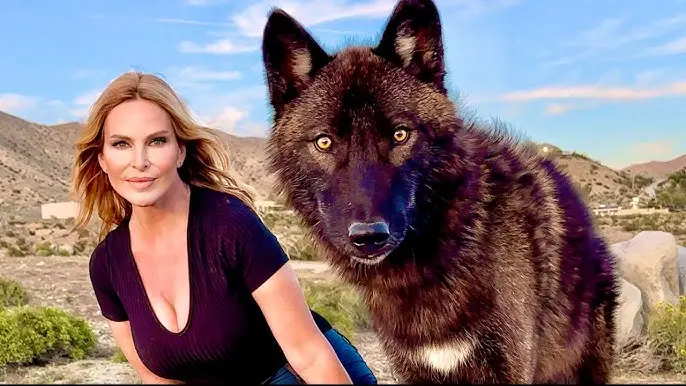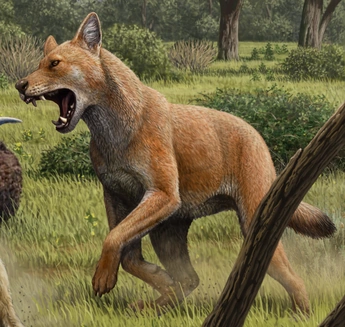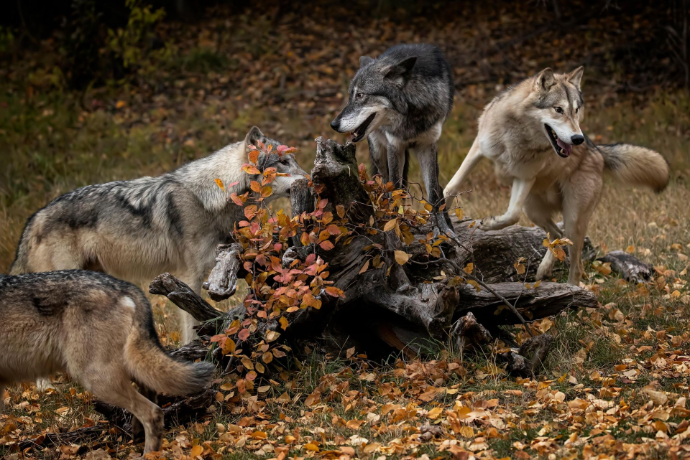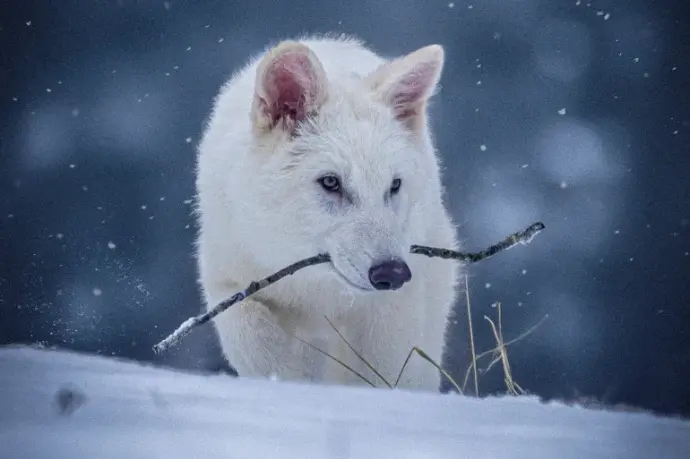🧬 Dire Wolves Were Not Really Wolves :
New Genetic Clues Rewrite Evolutionary History

🧪 Dire Wolf DNA Analysis : What the Genomes Reveal
The groundbreaking findings emerged from the analysis of ancient bones excavated from sites like the La Brea Tar Pits and various fossil beds across North America. Scientists employed next-generation sequencing technology to extract and decode highly degraded DNA, assembling the genome of the dire wolf for the first time.
Despite their physical similarities, the dire wolf and gray wolf are not closely related. The study revealed that dire wolves diverged from other canids so long ago that their closest living relatives are unknown. Unlike gray wolves, coyotes, or jackals, who share a more recent common ancestor, the dire wolf represents a completely separate evolutionary lineage that developed independently in the Americas.
This discovery redefines the dire wolf not as a wolf, but as a unique branch of the canid evolutionary tree. This distinction is so profound that researchers assigned it to its own genus: Aenocyon, meaning “terrible wolf.
Convergent Evolution :
Why They Looked So Similar
One of the most fascinating aspects of this discovery is the phenomenon of convergent evolution. Although dire wolves and gray wolves appear nearly identical in skull shape, body size, and dentition, these similarities evolved independently. This is a classic case of evolutionary mimicry, where species occupying similar ecological niches develop comparable traits due to similar environmental pressures.
Both dire wolves and gray wolves evolved as apex predators during the Ice Age, preying on large herbivores like bison, camels, and horses. These shared pressures sculpted their forms in parallel, despite their genomic dissimilarity.

🌍 What Caused the Extinction of Dire Wolves ?
Dire wolves vanished approximately 13,000 years ago, coinciding with a wave of megafaunal extinctions at the end of the Pleistocene epoch. Leading theories for their extinction include :
- Abrupt climate change
- Loss of large prey animals
- Competition with gray wolves and humans
- Possibly zoonotic diseases

❓ Did They Go Extinct from Canine Brucellosis?
While there's no direct paleogenetic evidence, some researchers speculate that canine brucellosis or other infectious reproductive diseases may have contributed to population decline. Brucella canis, a bacterium that causes infertility and spontaneous abortion in dogs, could have had similar effects in prehistoric canids.
Such a disease, combined with environmental stresses and competition, could have tipped the balance, hastening their extinction.
🧬 De-Extinction : Are Dire Wolves Coming Back ?
In April 2025, Colossal Biosciences, a Texas-based biotech firm specializing in de-extinction technology, announced the birth of three gene-edited wolf pups: Romulus, Remus, and Khaleesi. Using CRISPR/Cas9 genome editing, the company inserted carefully selected dire wolf-like traits into gray wolf embryos.
These pups exhibit features reminiscent of dire wolves, such as larger size, white fur, and cranial structure. Colossal claims this is the first step toward re-creating extinct species using synthetic biology.

⚠️ Is This Really a Dire Wolf ?
While sensational, many scientists caution that these animals are not true dire wolves. They are genetically modified gray wolves designed to mimic some physical traits of the extinct species. Their core genome remains modern, lacking the deep genetic divergence that characterized Aenocyon dirus.
This has ignited debate over what constitutes a true resurrection. Are we reviving extinct species or simply creating living homages ?
Contact usFrequently Asked Questions❓
Though unproven, the role of canine brucellosis in prehistoric extinctions is a valid hypothesis. Brucella canis could have disrupted reproductive success in densely populated canid packs, reducing offspring viability and accelerating extinction.

Yes, during their time, dire wolves reproduced sexually and socially, likely forming complex packs. However, due to their extreme genetic divergence, they were biologically incapable of interbreeding with coyotes or gray wolves.
In veterinary science, Canine Brucella Rapid Tests are routinely used to detect Brucella canis in domestic dogs, especially in breeding kennels and research labs. These immunoassays are essential in managing reproductive disease outbreaks.

While the idea of a “Dire Poodle” is humorous, it’s biologically impossible. Dire wolves and poodles are separated by millions of years of evolution. They have no reproductive compatibility, even with gene editing.

Rethinking Prehistoric Canines
The new genetic findings surrounding dire wolves force us to radically rethink their place in the tree of life. They were not simply bigger, badder gray wolves; they were a unique evolutionary experiment, sculpted by time and isolation into something entirely separate.
Today, with the rise of de-extinction science, we stand at a new frontier. But the line between genuine resurrection and synthetic mimicry is blurry. As we unravel the genetic tapestries of the past, we must tread carefully, balancing innovation with ethics, and curiosity with conservation.
🧬 Has the Dire Wolf Come Back to Life?
No, the dire wolf has not truly come back to life. While Colossal Biosciences has announced the creation of gene-edited gray wolves with traits that resemble dire wolves—such as size, cranial structure, and fur color—these animals are not genetically authentic dire wolves (Aenocyon dirus).
Instead, they are considered genetically modified modern wolves, designed to mimic the appearance of dire wolves using CRISPR-based genome editing. The core DNA, however, remains that of a gray wolf, not the deeply divergent genome of a true dire wolf.

